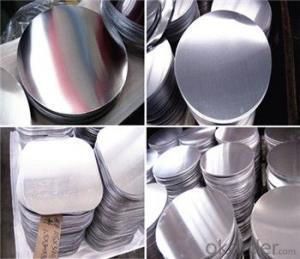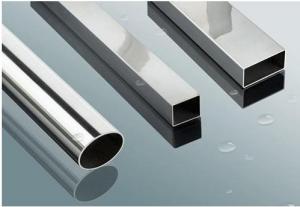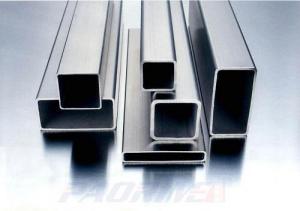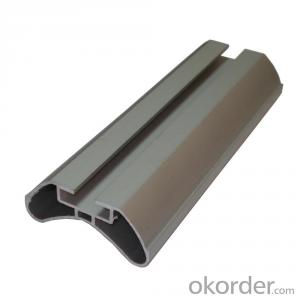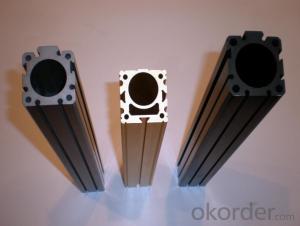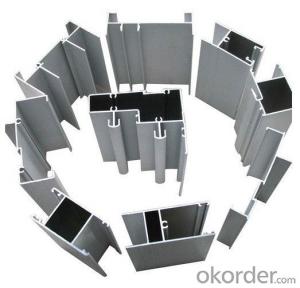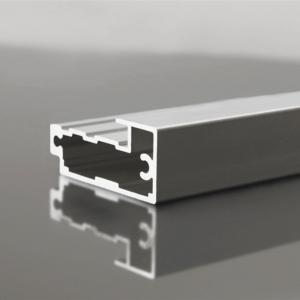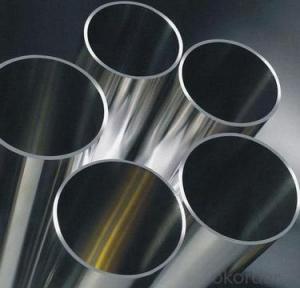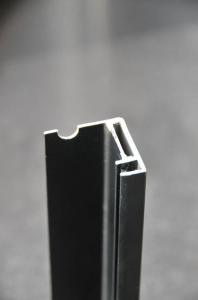T Slot Aluminum Extrusion Profiles - High Quality Aluminium Circle Sheet with a Good Price
- Loading Port:
- Qingdao
- Payment Terms:
- TT OR LC
- Min Order Qty:
- 10000 kg
- Supply Capability:
- 100000 kg/month
OKorder Service Pledge
OKorder Financial Service
You Might Also Like
Specification
Aluminium Circle Sheet

Aluminium circle sheet introduction
Our company to introduce advanced aluminium circle sheet production equipment, effectively improve production efficiency and material utilization, shorten the delivery cycle. Our company strengthened the control of the grain size and elongation of the coil, Respectively cold rolled and hot rolled aluminium circle sheet was launched,and cover 1, 3, 5, 8 series alloys. Complete product range, thickness 0.7-6.0 mm, diameter 100-1200 mm, tolerance in line with national standard requirements.
Aluminium circle Picture
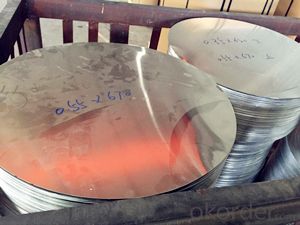
Aluminium circle sheet Features
1.Aluminium circle sheet specifications complete,conventional size outside,can provide the most thin 0.5 mm, the most thick 6.5 mm aluminium circle sheet;
2.Aluminium circle sheet surface performance is good, to ensure no obvious scratches, oil, oxidation, dark spots and so on;
3.Aluminium circle sheet thickness> 1.0 mm, to ensure that the finished side of the neat no burrs;
4.The good control of grain size and elongation in early stage,to ensure that the aluminium circle sheet of the deep drawing and spinning performance, effectively avoid the late processing may occur when the drawing, lotus leaf, the ear rate of high bad phenomenon;
5.Strictly control the coil of the alloy, the state, performance, to ensure the accuracy and diversity of aluminium circle sheet provided;
6.The introduction of advanced and efficient production equipment, improve the production efficiency of aluminium circle sheet and the utilization rate of material and shorten the production cycle, provide real-time and convenient service for the customer;
7.Aluminium circle sheet detailed classification, according to different purposes and requirements, customers can choose accurate category;
8.Products comply with RoHS and REACH the environmental protection standard;
9.Product packaging firm, in line with domestic sales and international export standards.
Introduction of our company
Our company is a professional Aluminium Strip manufacturer and Aluminum Circles manufacturers,mainly supply Aluminium Coil,Aluminum Circles,Aluminium discs,Aluminum Sheet,Aluminum Strip, Household Aluminum Foil,Aluminum Foil for Pharmaceutical Packaging,Aluminum Foil Tape,Aluminum Foil for Air Conditioner,Aluminum Foil for Container etc. series of aluminum products, sincerely welcome everyone to visit.
- Q: This question asks for various methods of producing aluminum profiles in a manner that is both efficient and cost-effective.
- <p>Efficient and cost-effective manufacturing of aluminum profiles can be achieved through several methods: 1) Using advanced extrusion technology, which is the primary method for shaping aluminum profiles, allows for high production rates and consistent quality. 2) Implementing automation in the production process to reduce labor costs and increase output. 3) Employing recycling techniques to use scrap aluminum, which lowers material costs and is environmentally friendly. 4) Optimizing the design of profiles to reduce material usage without compromising strength. 5) Utilizing energy-efficient equipment and processes to minimize energy consumption. 6) Regular maintenance and upgrading of machinery to ensure operational efficiency and reduce downtime. 7) Implementing just-in-time inventory management to minimize storage costs and reduce waste. 8) Continuous improvement through research and development to find new, more efficient methods of production.</p>
- Q: I want to make my aluminum oxide, how much money is needed is a set of equipment? Please leave, thank you!
- The price of the equipment is not primary, mainly because of the technical requirements of oxidation. "This is not as simple as you think."
- Q: What are the different colors and finishes available for aluminum profiles?
- There are various colors and finishes available for aluminum profiles, allowing for customization and versatility in design. Some common colors include silver, black, white, bronze, and gold. These colors can be achieved through anodizing, which involves the electrochemical process of creating a durable oxide layer on the surface of the aluminum. Anodized finishes not only provide color options but also enhance the corrosion resistance and durability of the profiles. Apart from anodizing, powder coating is another popular method used to achieve different colors and finishes. Powder coating involves applying a dry powder to the aluminum surface electrostatically, and then curing it under heat to create a smooth, strong, and uniform finish. This method offers a wide range of colors, including metallic, matte, gloss, and textured finishes. Furthermore, aluminum profiles can also be painted using liquid paint, which provides endless color options. Liquid paint finishes can be customized to match specific color requirements, making them ideal for projects with unique design needs. In summary, the different colors and finishes available for aluminum profiles include anodized finishes such as silver, black, white, bronze, and gold, as well as powder coating finishes like metallic, matte, gloss, and textured. Additionally, liquid paint can be used to achieve virtually any color desired. These options allow for flexibility in design and ensure that aluminum profiles can complement various architectural and industrial applications.
- Q: Are there any specific requirements for transporting and storing aluminum profiles?
- Yes, there are specific requirements for transporting and storing aluminum profiles. Aluminum profiles should be handled with care to prevent any damage or deformation. During transportation, they should be properly secured to avoid shifting or falling. It is recommended to use protective packaging and cushioning materials to prevent scratches or dents. When storing aluminum profiles, they should be kept in a clean and dry area to prevent corrosion. It is advisable to stack them horizontally or on racks to avoid bending or warping. Additionally, they should be stored away from direct sunlight and extreme temperatures.
- Q: What are the noise reduction properties of aluminum profiles?
- Aluminum profiles possess excellent noise reduction properties due to their inherent characteristics. The high density and rigidity of aluminum make it an effective material for reducing noise transmission. When used in structural applications, aluminum profiles can dampen and absorb sound waves, limiting their propagation and reducing noise levels. The versatility of aluminum profiles allows for the incorporation of additional noise-reducing features. For instance, aluminum profiles can be combined with insulating materials, such as foam or rubber, to further enhance their noise reduction properties. This combination creates a barrier that absorbs sound waves, preventing them from passing through and minimizing noise transmission. Moreover, aluminum profiles can be designed with intricate shapes and structures, which aid in reducing noise. By utilizing innovative designs, such as ribbing or perforations, the profiles can disrupt sound waves and scatter them, effectively reducing noise levels. Furthermore, aluminum profiles can be anodized or coated with sound-absorbing materials, which enhances their noise reduction capabilities. These surface treatments can help to absorb and dissipate sound energy, reducing noise resonance and improving overall acoustic performance. In summary, aluminum profiles possess excellent noise reduction properties due to their density, rigidity, and versatility. When combined with insulating materials, innovative designs, and surface treatments, aluminum profiles can effectively reduce noise transmission, making them a suitable choice for applications where noise control is crucial.
- Q: What are the different methods of joining aluminum profiles together?
- There are various ways to connect aluminum profiles, depending on the desired result and specific application. The most commonly used techniques include: 1. Mechanical fastening: To secure aluminum profiles, screws, bolts, or rivets can be employed. This method is straightforward and cost-effective, suitable for different applications. However, it may leave visible fasteners and require additional finishing. 2. Welding: Aluminum profiles can be joined using different welding techniques like TIG, MIG, or laser welding. Welding creates a sturdy and seamless joint, making it ideal for structural purposes. However, it demands specialized equipment and expertise. 3. Adhesive bonding: Specialized adhesives for aluminum bonding can be utilized to connect profiles. This technique offers high strength, even stress distribution, and a clean appearance. Adhesive bonding is commonly used for lightweight applications or when welding is not feasible. 4. Slotting and interlocking: Profiles with specially designed slots or interlocking features can be connected without additional hardware. This method ensures a seamless and neat appearance while maintaining structural integrity. 5. Thermal joining: Heat-based methods like hot plate welding or induction heating can be employed to connect aluminum profiles. These processes involve melting a portion of the aluminum surface and bonding it upon cooling. Thermal joining provides both strength and aesthetics without requiring extra materials. 6. Extrusion-based connectors: Connectors designed for extrusion are components that allow for the joining of aluminum profiles. These connectors are typically inserted into the slots or channels of the profiles, providing a secure and long-lasting connection. When choosing the appropriate method for joining aluminum profiles, it is necessary to consider factors such as strength requirements, appearance, ease of assembly, and cost. Each method has its own advantages and limitations, so the most suitable technique depends on the specific application and desired outcome.
- Q: How do aluminum profiles handle extreme weather conditions?
- Aluminum profiles are known for their exceptional durability and resilience, making them highly capable of handling extreme weather conditions. Due to their inherent corrosion resistance, aluminum profiles can withstand harsh weather elements such as heavy rain, snow, extreme temperature fluctuations, and even high levels of UV radiation without corroding or deteriorating. One of the key attributes of aluminum is its ability to create a protective oxide layer on its surface, known as aluminum oxide. This layer acts as a natural barrier, shielding the metal from moisture, salt, and other corrosive agents present in the atmosphere. As a result, aluminum profiles remain unaffected by rain or snow, and they do not rust or corrode like other metals. Furthermore, aluminum's thermal conductivity allows it to quickly dissipate heat, preventing any damage caused by extreme temperature variations. Whether exposed to scorching heat or freezing cold, aluminum profiles expand and contract minimally, which helps maintain their structural integrity and prevents warping or cracking. Moreover, aluminum profiles can withstand high wind loads, making them suitable for areas prone to hurricanes, tornadoes, or strong gusts. Their lightweight yet sturdy nature enables them to withstand significant pressure without bending or breaking. In terms of UV radiation, aluminum profiles have excellent resistance to fading and discoloration. They can effectively endure prolonged exposure to sunlight without losing their original color or surface finish. This makes them an ideal choice for outdoor applications, such as windows, doors, and facades, where they remain visually appealing and structurally sound even in extreme weather conditions. Overall, aluminum profiles exhibit remarkable durability, corrosion resistance, thermal stability, and resistance to UV radiation, allowing them to effectively handle and withstand the challenges posed by extreme weather conditions.
- Q: This question asks for methods to ensure the reliable and durable installation of aluminum profiles.
- <p>To ensure the reliable and durable installation of aluminum profiles, follow these steps: Use high-quality aluminum materials that meet industry standards for strength and durability. Ensure proper alignment and level during installation to prevent warping or stress on the profiles. Use appropriate fasteners and adhesives recommended for aluminum to ensure a strong bond. Avoid over-tightening fasteners, which can cause deformation. Regularly inspect and maintain the profiles to check for signs of wear or damage, and address any issues promptly. This will help maintain the integrity and longevity of the aluminum profiles.</p>
- Q: What are the various energy-saving characteristics that can be incorporated into aluminum profiles?
- <p>Aluminum profiles can incorporate several energy-saving features to enhance thermal insulation and reduce energy consumption. These include: 1. Thermal breaks: Inserts that reduce heat transfer between the interior and exterior of a profile. 2. Multi-chamber designs: Multiple air chambers within the profile that act as insulators. 3. Low-E coatings: Reflective coatings that reduce heat transfer. 4. Insulating glass units: Double or triple glazed units with gas fills that provide superior insulation. 5. Passive solar design: Profiles designed to maximize heat gain in winter and minimize it in summer. 6. High-performance seals: Gaskets and seals that minimize air infiltration. 7. Aerodynamic shapes: Profiles that reduce air resistance and heat loss. These features can significantly contribute to energy efficiency in buildings.</p>
- Q: What are the reasons for the large number of products in the aluminum profile cutting machine after opening?
- When sawing, lubrication is insufficient, check the lubrication system, and the other may be aluminum material is not good
Send your message to us
T Slot Aluminum Extrusion Profiles - High Quality Aluminium Circle Sheet with a Good Price
- Loading Port:
- Qingdao
- Payment Terms:
- TT OR LC
- Min Order Qty:
- 10000 kg
- Supply Capability:
- 100000 kg/month
OKorder Service Pledge
OKorder Financial Service
Similar products
Hot products
Hot Searches
Related keywords
